47 GHz transverter
This 47.088 GHz transverter concept is a 9A4QV (Adam) design.
Only a few parts are needed and I will give them a try.
A 12 GHz module, a Philips up/downconverter, IF-interface, IF transmitter/receiver and an antenna.
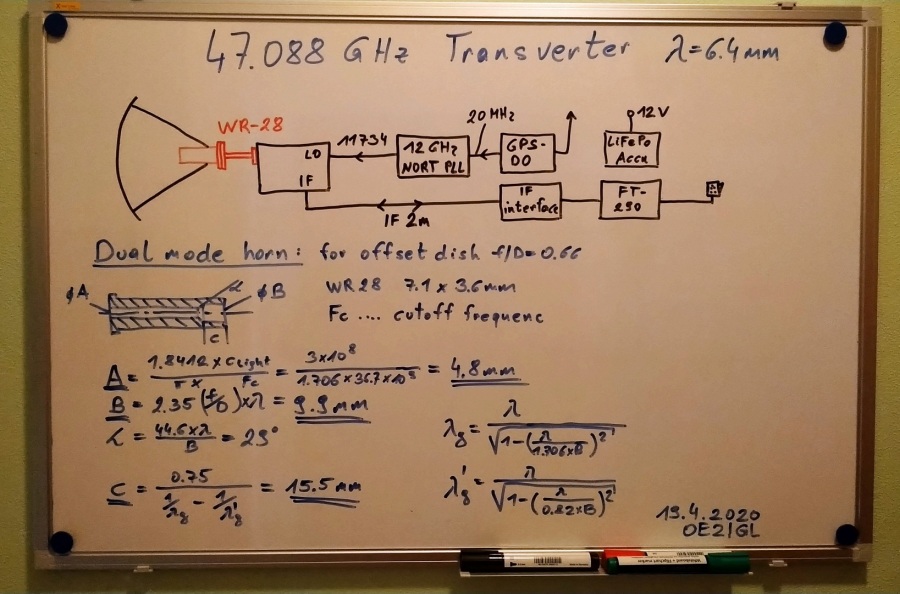
Click on image, download and extract my Excel sheet "Link budget v2.1" to calculate microwave links up to 1000 GHz. Calculation of atmospheric attenuation (ITU-R P.676-12) is included.
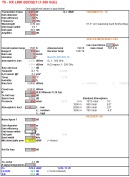
1. Offset dish and tripod with pan/tilt mount
Same design as for my 76 GHz transverter and pan/tilt head.
2. W2IMU dual mode feed horn
hdl_ant software by W1GHZ is a good choice to calculate a dual mode feed horn. It is a circular wave guide with a diameter of 4.8 mm and the aperture is 9.9 mm (depth of 15.5 mm).
Wave length = 6.4 mm
WR-28: 7.1 x 3.6 mm
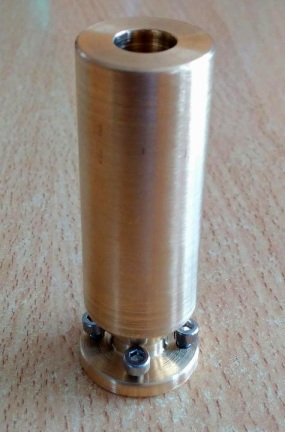
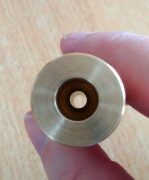
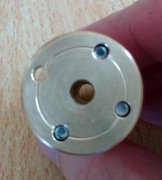
3. Up/down mixer
I use a Philips ML202938-002 upconverter. It is mainly designed for 38-39 GHz but it works as mixer up to 47 GHz. IF has a wide range up to 10 GHz or more.
LO should be less than 38-39 GHz because of the low pass filter after the tripler diode.
11736 * 4 + 144 IF = 47088 MHz, in this case LO is too high and LO filter degreases the signal
OR the preferred solution:
12240 * 3 + 10368 IF = 47088 MHz, in this case LO fits to LO filter
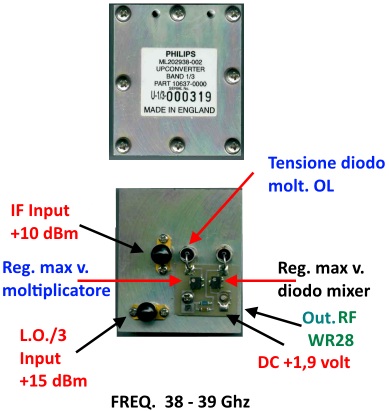
NORT PLL with mixer and dual mode horn:
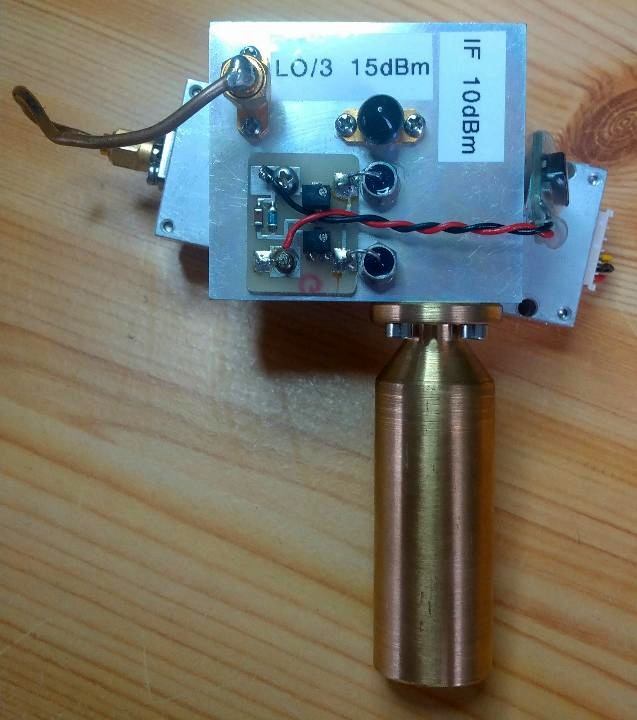
In combination with my 10 GHz transverter (Philips module: LO= 12.5 dBm, max. IF= 12 dBm) I measured 0.1 mW at 47.088 GHz.
With a LO = 15-15.5 dBm I reached 0.2 mW. That's more than enough for this simple diode-mixer transverter. I guess LO power for the tripler could be up to 18 dBm and IF power should be max. 10 dBm.
Inside view of module:
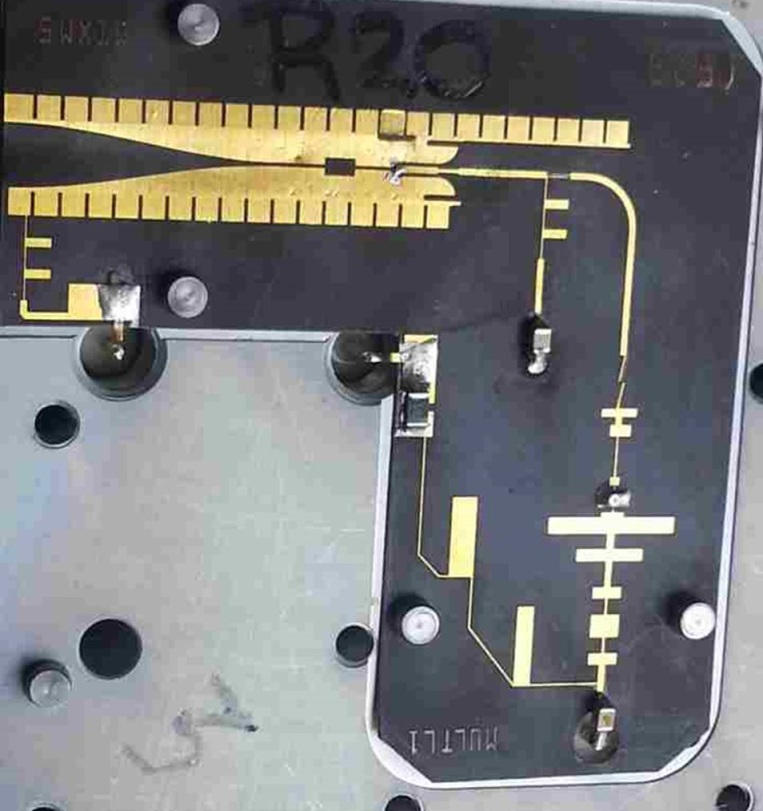
There is also a Philips downconverter available, ML202938-001. We found no differences between down- and upconverter.
The label shows that there are "band 1/3" and "band 2/4" modules available for down- and upconverter. Again we found no difference.
4. PLL with 12240 MHz output
1st solution:
I use a modified NORT PLL to obtain 12240 MHz for the up/down mixer input. Inside the module is an additional controller to program the ADF chip after switch on.
See more under electronics.
Output power : 13.2 dBm
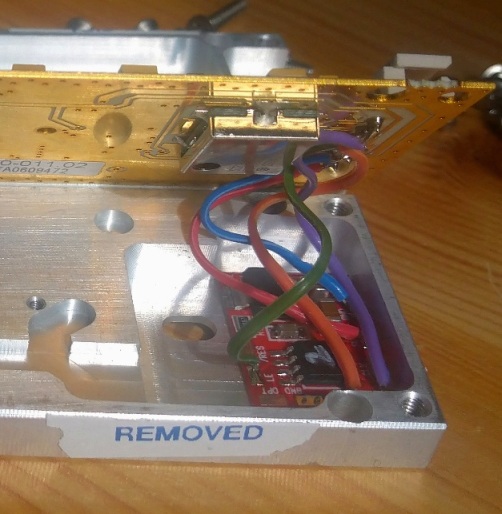
ADF4153 parameters for (internal) reference frequency of 20 MHz. VCO output is 3060 MHz and this gives 3060 *4 = 12240 MHz for the mixer.
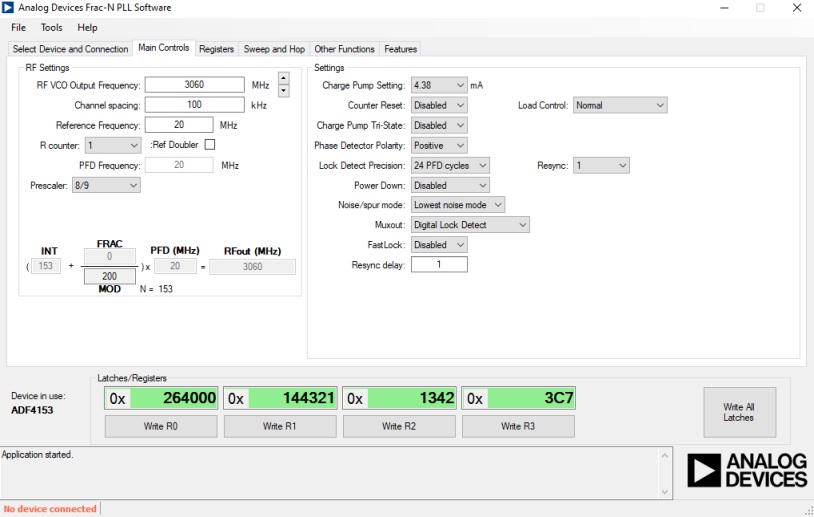
2nd solution:
Another solution could be a CTI-PDRO oscillator with up to 15 dBm output power.
Current consumption @12V: 250 mA
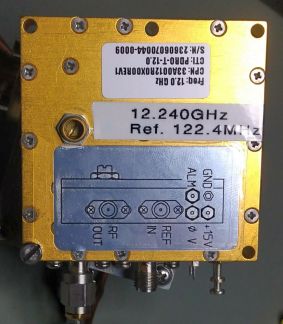
3rd solution:
LO/3 power could be higher to get more power for the mixer and 47 GHz output. I built a 12 GHz LO module designed by DB6NT.
12.240 GHz ouput: 85 mW (19.0 dBm)
Current consumption @12V: 220 mA
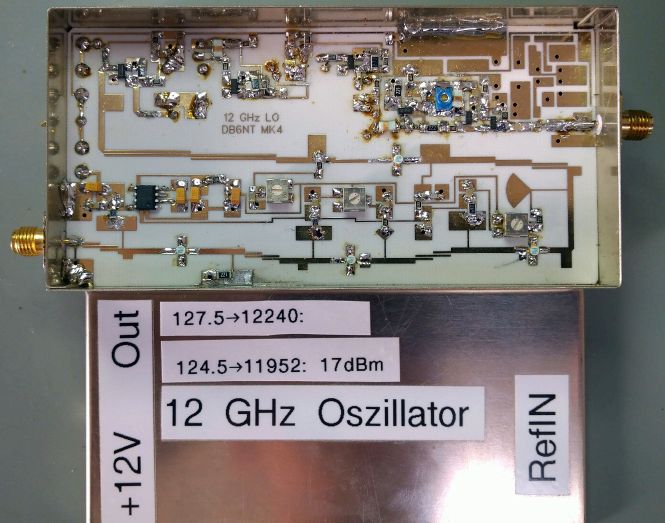
5. GPS disciplined 122.4 or 127.5 MHz reference oscillator to set PLL reference input
Here I use a nice unit by Leo Bodnar.
It has 1 output (3.3V CMOS level) from 450 Hz to 800 MHz and it uses GPS reveiver for very stable output frequency.
Output power up to 13.7 dBm
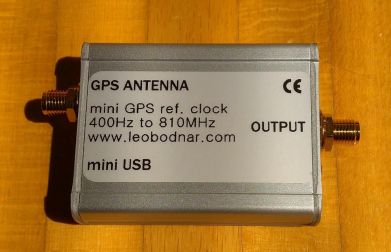
6. IF interface and IF receiver/transmitter
For the 3cm (10368 MHz) IF version I use a "Simple 10 GHz transverter" by DB6NT followed by the IC-705. See more here.
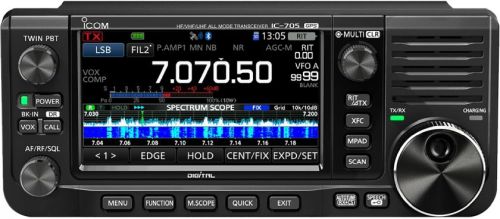
7. Accu Pack
I use a 12V LiFePO4 accu with 10Ah because of its light weight, only 1.4 kg.
8. Test results
19th of July 2020: First successful 47 GHz (SSB, FM) test QSO.